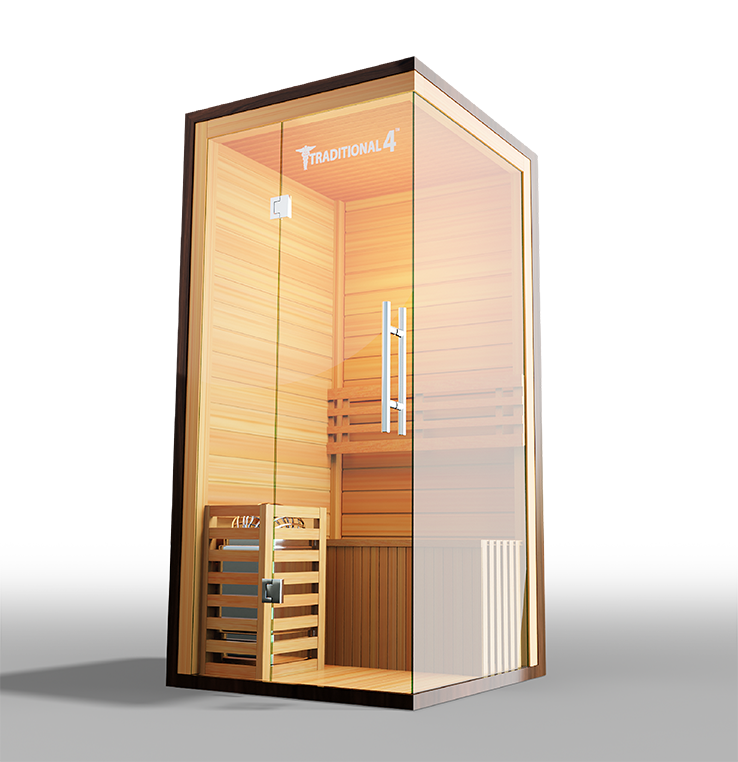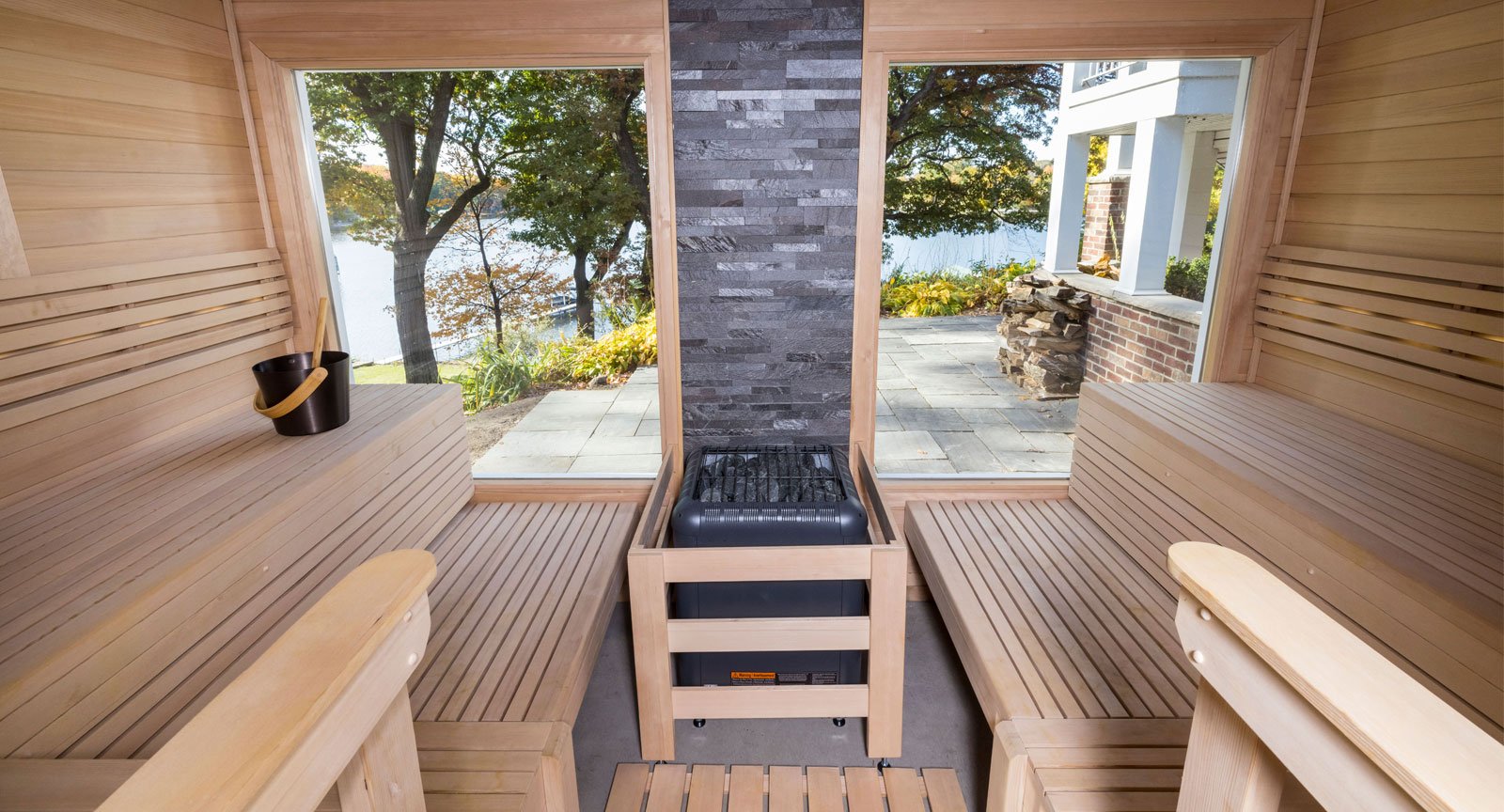Traditional Sauna - Truths
Traditional Sauna - Truths
Blog Article
See This Report on Traditional Sauna
Table of ContentsLittle Known Facts About Traditional Sauna.Traditional Sauna Fundamentals ExplainedThe Best Strategy To Use For Traditional Sauna6 Easy Facts About Traditional Sauna Explained
A lot of the weight lost in a sauna is water loss and is re-gained upon rehydrating. Nevertheless, undoubtedly sauna can be a fundamental part of a healthy fat burning program. To check out the distinctions between conventional and IR saunas, I will certainly separate these right into verifiable, academic, and produced distinctions.Thus, the best factor in the saunawhich is at the ceiling directly above the sauna heateris generally between 185 and 190 F. Traditional Sauna. Claims that a traditional sauna goes beyond 200 F is simply not real and not appropriate for electric saunas marketed in the US. The temperature level for a far-infrared sauna is usually set between 120 and 140 F; nevertheless, unlike the standard sauna, the goal in and IR room is not to accomplish a heat
As a result of this, the temperature level distinction is virtually irrelevant, given that profuse sweating leads to both sauna types, however the method of heating up the body is various. In an IR sauna the bather will certainly really feel warm and will sweat a lot, but at a lot reduced temperatures. Therefore, if the objective is to invest longer amount of times in the sauna, the IR sauna is an excellent choice.

The 45-Second Trick For Traditional Sauna
When the high temperature is accomplished, the components cycle on and off to maintain the high temperature. The majority of conventional sauna individuals appreciate putting water over the rocks to produce vapor to increase sauna moisture degrees. The benefits of pouring water over the rocks include: making the room much more comfortable, dampening the nasal passages, and permitting the usage of aromatherapy by blending essential oils with the water.
In a far-infrared sauna, the warmth waves penetrate the body to successfully heat up the body and elevate the body core temperature level. To attain this boosted temperature, Far-infrared emitters produce infrared power which is close to the exact same wavelength as that which the body naturally emitsoften referred to as the "Crucial Array" of 7 to 14 microns), so the power is well gotten by the body.
When the energy goes into the body, it creates the body temperature to raise and inevitably results in perspiration. In an infrared sauna it is essential for the emitters/heaters to stay on nearly constantly. Because Home Page there is no mass of rocks to maintain heat, the sauna will certainly cool if the emitters shut off.
As stated above, the sauna bather in an infrared room intends to position himself in front of running emitters to get optimal take advantage of the heat. The heating time for both spaces can be extremely different, depending on how the rooms are made use of. For a standard sauna, a bather ought to allow 30-40 mins for the room to attain a wanted temperature and to appropriately pre-heat the rocks.
What Does Traditional Sauna Do?
A well constructed sauna will normally achieve a temperature of 150-160 F in concerning 30-40 mins (Traditional Sauna). For hotter temperatures, the room may need to warm for a longer period. When the space achieves established temperature level, the heater will cycle on and off, typically running about 50% of the moment. The protected wall surfaces and the heated rocks will keep the area hot and at secure temperatures.
To some, 15 minutes was "lost" while the infrared energy warmed the wood panels rather than heating up a body, while others locate a pre-heated space to be much more comfortable and believe a raised starting temperature level is required to begin perspiring. The length of recommended usage for every area is roughly the exact same (10-15 mins per session); however, because of the lower air temperature levels and the ability to really feel the impacts of infrared warm much faster than a traditional sauna, it is not unusual for an individual to invest a total of 20-30 mins in an infrared sauna.
Typical saunas have a tendency to be bigger (hence make use of even more electrical energy) than infrared saunas, although typical saunas are certainly offered in one and linked here 2 individual sizes also. For a two-person standard sauna, 5x6 or 5x7 dimension is most popular. The top bench can comfortably seat 2 or three individuals and is also long sufficient to rest throughout the sauna session.


The average price per kWH of power in the united state is around $0.11, so a 4.5 kW heating unit will cost roughly $.50 to compete one hour, if use this link the heating unit runs continuously for one hour. Generally a sauna heating unit will certainly compete 75% of the very first hour and 50% of succeeding hours on since the elements cycle once the set temperature level is achieved.
Getting My Traditional Sauna To Work
A 2 individual far-infrared space is usually literally smaller than a conventional sauna, commonly about 4' x 4' or smaller. The IR heater is generally 1.5-1.7 kW making use of a 120 volt 15 amp plug-in solution. Considering that the space can be used earlier than a sauna area, we will certainly presume the room is made use of for to of an hour consisting of warm up time.
Lastly, there is a seldom gone over difference in the social experience in between both areas. While our culture has lost several of the social benefit of the standard sauna experience, it can be really socially satisfying. From household time in the sauna, to heart-felt conversations with loved ones, to sauna partiesthe traditional sauna experience can cause intimate interacting socially.
The majority of greater end infrared spaces include colored light treatment, noise systems and full-glass fronts. The dimension of the majority of rooms permit 2 people to easily utilize the area, while some designs might enable a 3rd or 4th person to make use of the room. Personalized infrared spaces are also available, with room dimensions offered as much as 7' x 8' x 7' high.
Report this page